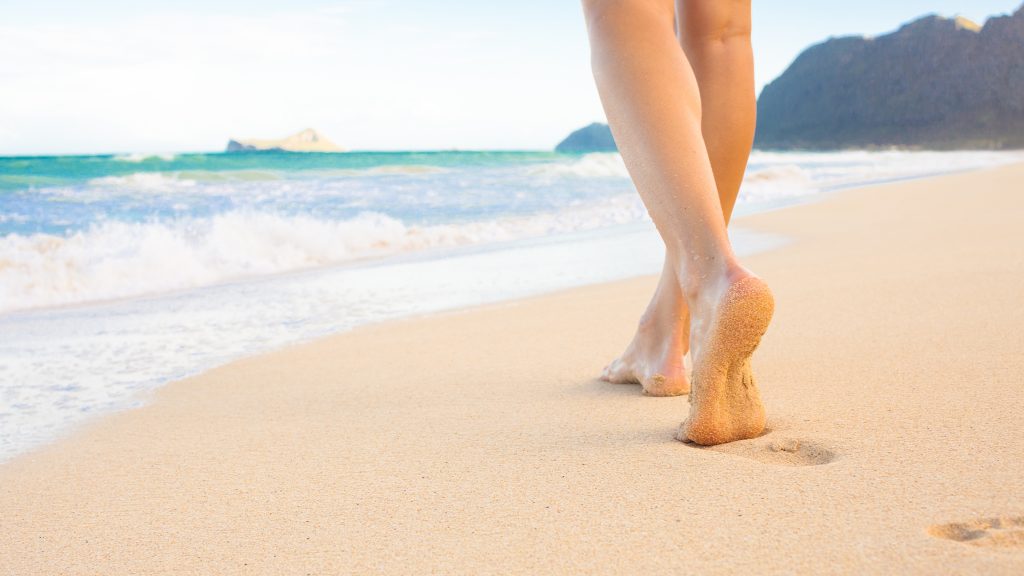Introducing VeinGogh: The Revolutionary Spider vein Treatment
It’s astonishing how far we’ve come in terms of innovative medical technology and we continue to move forward. We have successfully treated diseases which we were unable to previously. Another one of those revolutionary medical phenomena is VeinGogh. It’s the least invasive and most effective way of getting rid of spider veins. Wondering what it actually is and how it works?
Keep reading to find out!
Let’s take a look at what it’s treating first.

Spider veins
The blood vessels which take blood from all the other parts of the body back to the heart are called veins. Varicose veins or “Spider Veins” are small red, blue, or purple thin web-like lines which appear on your skin when the valves of veins become damaged or weak, causing your blood to pool in the veins instead of returning back to the heart as it should.
Spider veins usually develop on the legs, thighs, and ankles. They may also form on the face. Furthermore, they are more of a cosmetic concern than they are a medical one which means they are usually harmless. However, they may cause symptoms such as aching, burning, restlessness, and heaviness in legs and pain. Even though 30% to 60% of adults suffer from spider veins, women are more likely to have them, and the symptoms are worst during certain parts of the menstrual cycle. Additional symptoms include swelling, ulcers, and darkening of the skin.
There are many factors which make someone susceptible to spider veins. Here are a few:
- Genetic factors
- Occupations such as nursing, hairstyling, teaching, etc
- The use of contraceptive pills
- A history of bold clots
- Obesity
- Hormonal effects of pregnancy, puberty, and menopause
There are a few preventative measures that can be taken to ensure you don’t get spider veins. Here are a few:
- The importance of wearing sunscreen can’t be emphasized enough. Along with causing many other problems, the sun can also cause you to lose collagen from your skin, making your skin thinner and, in turn, making your blood vessels easily visible. Sunscreen blocks UV rays, reducing sun damage.
- Being overweight puts pressure on your veins and puts you at the risk of damaging them. Therefore, it’s important to have a healthy balanced diet and a rational exercise routine
- Along with its many other benefits, exercise can strengthen blood vessels and improve blood circulation, thereby preventing spider veins.
- It’s really important to avoid standing or sitting for long periods of time as this can potentially cause vein damage and disturb blood circulation.
Now, if you already have spider veins, what do you do then? The first thing to do is to consult your physician. Even though there are many general reasons to get spider veins, but it’s always better to know if there is an underlying condition causing them so you can be treated accordingly. A vein dysfunction deeper in the leg called venous insufficiency can be a possible reason for spider veins.
VeinGogh Treatment
VeinGogh is actually a brand name for a procedure which is called Ohmic thermolysis or radiofrequency thermocoagulation. This is a new and revolutionary way of treating smaller spider veins. Sclerotherapy is another way of treating spider veins; however, it is more suitable for larger spider veins and is actually more difficult to regulate.
So how does it work? Well, by means of a fine probe tiny, high-frequency current is channeled to the vein that starts to transmit heat to it. This causes coagulation of blood and causes the wall of the vein to collapse. This wall is afterward rapidly absorbed by the body. The probe performing the entire procedure is insulated throughout except at the tip, so the current doesn’t damage nearby tissue. It also doesn’t affect the top layers of the skin. VeinGogh treatment only works on veins with a diameter up to 0.3 millimeters.
The great thing about this treatment is that it is the least invasive of options out there. It has no side effects other than a little redness immediately after the session which goes away after a couple of hours. Furthermore, it is an absolutely painless procedure, so you don’t need any anesthesia for it. The patient can easily resume their daily activities after their session. The procedure takes roughly 20 to 25 minutes.
Recovery
You will be able to immediately go back to your normal daily activities after a VeinGogh session; however, your skin may be sensitive for a week or so. There are a few measures needed to be taken after the treatment. It’s important to not directly expose your skin to the sun at least for a couple of weeks after the procedure and to wear an SPF of 30 or above if you do go outside. Furthermore, applying Aloe Vera gel may help you with the sensitive skin issue.
After the procedure, it will take your body some time to reabsorb the veins, and you will see the veins fade over time. However, this procedure does not prevent new spider veins from forming. Furthermore, this treatment is best suited for smaller spider veins. For larger ones, there are procedures like Sclerotherapy and Surface laser treatment which are more expensive and invasive.
VeinGogh vs. Sclerotherapy
Where VeinGogh is suited for the treatment of smaller spider veins and is less invasive, Sclerotherapy is suited for the treatment of larger spider veins.
During the procedure of Sclerotherapy, the physician injects the spider veins with a solution which scars and closes the veins. The blood then is redirected to healthier veins. The spider veins fade slowly. This procedure might have to be done more than once and can be performed at your doctor’s office. It doesn’t need anesthesia. It can further help with symptoms such as:
- Night cramps
- Aching
- Swelling
Furthermore, surface laser treatment is performed by sending bursts of light into the vein. This is an expensive alternative to VeinGogh. If you are suffering from both small and large spider veins, then the physician is likely to recommend a multi-session treatment.





